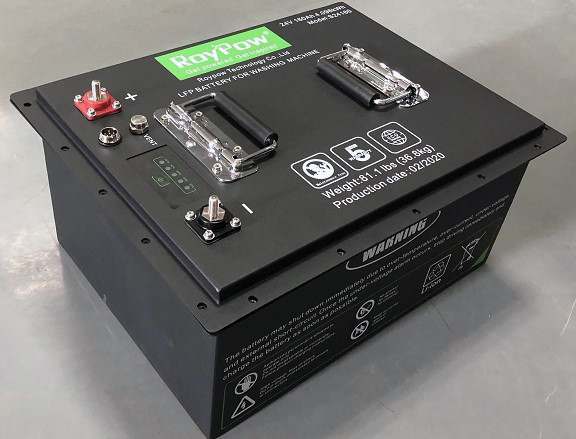Lithium batteries are seemingly everywhere.

Fewer industries have demonstrated such impressive growth and advancements as has the lithium battery business, specifically for golf carts and other low-speed vehicles. Their efficiency, power output and ease of maintenance is making the lithium ion cart battery the preferred method of powering carts and other electric vehicles around the world.
Many major cart manufacturers now equip their carts with high-end lithium batteries right from the production line, and a huge number of those with older, lead acid batteries are discovering the many benefits of refitting their carts with these new, technologically advanced batteries.
Lithium Batteries – Simplicity by Design
Lithium BatteriesTraditional lead acid batteries, once the standard for golf carts before around 2018, may be less costly to purchase, but the long-term benefits of lithium batteries may outweigh the slightly higher expense.
A key benefit is the requirement for fewer batteries than the number needed with lead acid batteries to achieve the same amount of power to the wheels, meaning a lot less overall cart weight. A complete set of lithium batteries weighs approximately 25 percent of the weight of a complete set of lead acid batteries.
Maintaining the batteries in your cart is often one of the biggest hassles of using lead acid batteries. Many people don’t use their carts year-round, especially in Florida and other southern states where people divide their time between 2 residences depending on the time of the year.
If your plans include leaving your cart dormant for an extended period, as most “snowbird” part-time residents need to do, you need to disconnect your lead acid batteries before you go.
Lead acid batteries can lose around 33% of their charge in 30 days, while lithium only lose around 3% – this can be important if your cart sits dormant for an extended period.
If you’ve ever found yourself out on the 16th hole or doing chores around your commercial business or property and your cart starts to gradually lose power, switching to lithium will solve that problem.
Lithium batteries operate at a fully-charged level of power delivery until they completely lose their charge. You won’t notice any loss of torque or power unless the lithium batteries are completely without charge.
The time it takes to charge lithium batteries is far less than that of lead batteries. It takes a lead battery around 8 hours to fully charge, while lithium batteries can be fully charged in about 3 hours.
This can mean significant savings in your electricity. Lithium batteries also will last you much longer then lead batteries because they can handle far more charging cycles over their lifetime. While a traditional lead battery can be charged around 1,000 times, lithium batteries can attain a fully-charged cycle up to 5,000 times over its use.
Partially charging a lead acid battery may result in damaging the cells, known as sulfation damage. Lithium batteries have the edge here, in that if you need a short, quick charge to run up to the country club for dinner, you won’t risk any damage to the batteries.
To Switch or Not to Switch
You may have been considering making the transition to lithium batteries in your cart. You’ll need to consider the overall condition and performance of your lead batteries and weigh that against the costs of new lithium batteries.
To be clear, not everyone is fully convinced that lithium batteries are the wave of the future. GolfCarting.com interviewed several sources for this article and discovered that there are those in the golf cart and electric vehicle industries who, based on a variety of reasons, feel that the future of using lithium ion batteries needs a little more time and research before they’re convinced of their benefits.
Since this technology was only developed approximately 5 years ago, some think that there has not been enough time to fully evaluate the claims made by lithium battery manufacturers. For example, the overall life span estimate of around 8 to 10 years cannot yet be accurately evaluated due to their short time on the market.
The average cost of enough lithium ion batteries to convert a typical golf cart installation is around $2,500. You’ll also need to purchase a new compatible charger and battery management system, (BMS), which will add about another $1,000 to $1,200, plus any applicable labor charges if you take your cart to a repair facility for the conversion.
But you should also factor in the potential savings and overall performance and durability of the new batteries in making your decision. Lithium mean no more corroded battery terminals, worrying about the water levels in your batteries or other maintenance issues.
With the lithium ion battery, you may be able to spend far less time wondering about your battery health and more time realizing the advanced performance and efficiency of your new upgrade.
A vice president of engineering for U.S. Battery Manufacturing has been quoted as being hesitant to jump on the lithium battery bandwagon just yet. “You need to look very carefully at their numbers. Lead acid is a safe, sound, and sadly, overlooked technology that’s 150-years young and completely recyclable.” The fact that lithium ion batteries are not able to be fully recycled could result in a significant negative impact on the environment in the future.
The bottom line on whether you convert your current lead acid batteries over to a lithium-ion system involves doing the research and being sure to include all the factors involved to make your decision.
You may discover that your current lead batteries provide the power and charge duration you require without any downside.
But if you’re willing to invest in what many feel is the more preferable lithium system and think the benefits outweigh the disadvantages, you can do the job yourself with a bit of mechanical know-how or take your cart to one of many independent cart and electric vehicle builders and repair shops and they can make sure your new batteries and configured and installed effectively and will operate safely.



